The groin is an anatomically and biomechanically complex area for runners. Groin pain in runners is challenging to diagnose and tricky to treat. Though they don’t represent a huge proportion of running injuries, they have a reputation for being difficult to get rid of. For more on injuries please read Shin Splint Treatment, Common Running Injuries For Men, Are Women More Prone To Running Injuries.
Running related groin injuries are not especially common. They only represent between about one and two percent of all injuries. A 1988 study on runners at a large road race in Switzerland pegged the incidence of groin injuries at 2.2%,1 while a 2002 study on recreational runners in Canada found an incidence of more like 1%. Though this was limited to injuries to the adductors alone.2
The groin, as we’re about to see, derives much of its complexity from the different muscle and tendon groups that come together in a small anatomic area.
The key to fixing groin pain in runners lies in understanding the complexity of the mechanics of the groin. The pubic symphysis is a bony union which you can picture as the “front bottom” of the pelvis.
It acts as the focal point for the adductor muscles of the thigh, which squeeze your legs together and help balance your pelvis during walking and running. Please read Balance Exercises for more. It’s also an attachment point for the rectus abdominus, a large, sheet-like muscle that forms your abs. It too has an important role to play in stabilizing the pelvis during locomotion.
As you might guess, a lot can go wrong in this area. Fortunately, though groin injuries are relatively rare in runners, they are well-researched, given how often they occur in sports like soccer. A 2007 study by Per Hölmich in Denmark examined 207 athletes with long-lasting overuse injuries to the groin and found that groin injuries fall into three main categories. For more on overuse injuries, please read, 8 Challenges to increasing Mileage – How to Safely Get to the Next Level.
These are injuries to the adductors, injuries to the iliopsoas, and combined injuries to the rectus abdominus and the adductors.3 Interestingly, injuries to the rectus abdominus rarely occur in isolation of the 20 patients in Hölmich’s study with rectus abdominus injury, 18 also had adductor injury.
Injuries to the adductors and to the rectus abdominus as related to groin pain in runners are the focus of this article. The iliopsoas, though it can cause pain in the groin area, has its own distinct diagnosis and treatment patterns.
Diagnosing Groin Pain In Runners
Hölmich provides several diagnostic tests for identifying the root cause of groin pain in athletes. An adductor injury causes pain and tenderness near the pubic symphysis, along with pain with resisted adduction of the legs.
An easy test for this is placing an inflatable ball or foam roller between your knees, then squeezing them together. If this maneuver produces pain, your groin pain is caused, at least in part, by your adductor muscles.
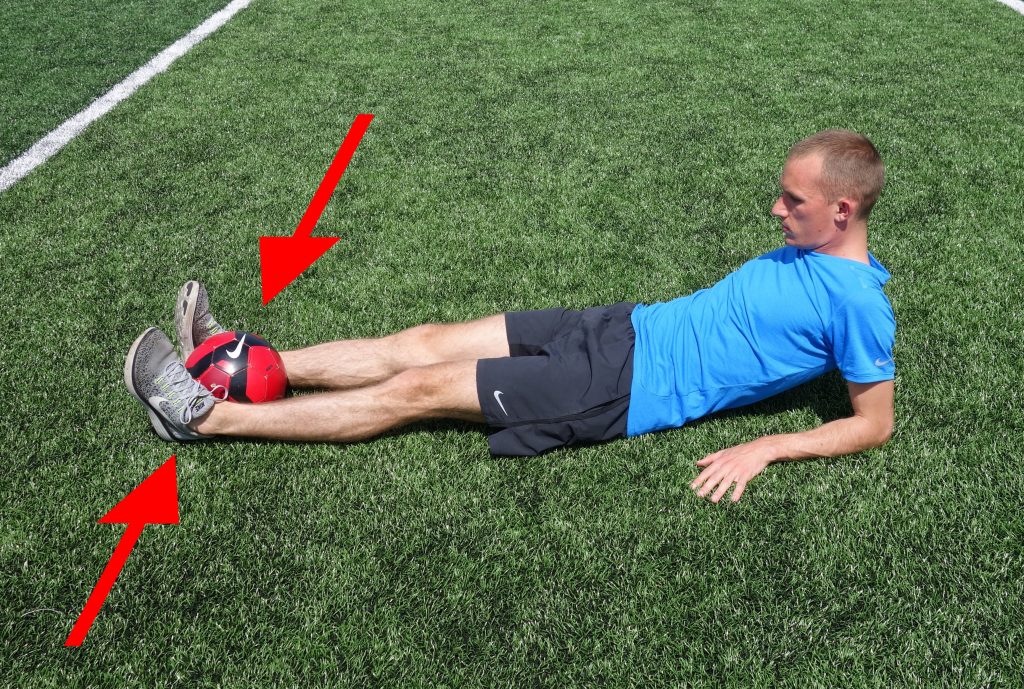
In the case of iliopsoas injuries, pain with resisted hip flexion is a hallmark of this type of groin injury, as well as pain and tenderness along the surface of the iliopsoas muscle, which runs a bit to the outside of the pubic symphysis.
Using either a partner or a solid structure to provide resistance, you can test for iliopsoas pain by lying down and attempting to lift your leg against resistance with your knee slightly bent. If this provokes pain, your injury is likely rooted in the iliopsoas.
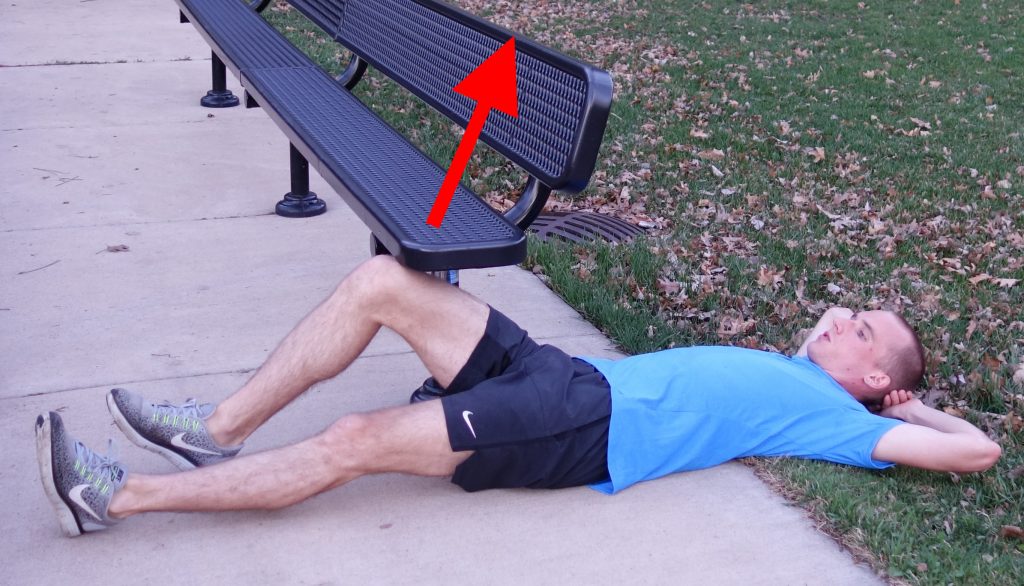
Test for iliopsoas-related groin pain
Rectus abdominus injuries cause pain superior to the pubic symphysis, in the area of your bladder or lower abdomen.
Any traditional abdominal strength exercise, like planks or crunches, will provoke pain if your groin pain involves the rectus abdominus. Remember to also check for adductor injury, as these two usually occur in conjunction with one another.
Other Potential Causes Of Groin Pain In Runners
In addition to iliopsoas, adductor, and rectus abdominus injuries, there are a handful of rarer problems that can also cause groin pain while running.
Before moving ahead with a treatment plan, you should make sure these aren’t the cause of your problems.
First, it’s possible to get a stress fracture near the pubic symphysis. A stress fracture in this region will produce an aching pain while walking or even at rest, and will be very tender to the touch. A bone scan or, preferably, an MRI, can diagnose this. Please read The Ultimate Runner’s Guide to Stress Fractures to learn more.
Hernias (a tear in the abdominal wall) are another potential cause of groin pain. Hölmich’s paper specifically excluded patients with either “normal” (inguinal) or “sports” hernias, but plenty of runners suffer from these injuries.4
A hernia is characterized by adductor and rectus abdominus pain on the tests described earlier, but will also present with pain while coughing, sneezing, or rolling over in bed.
Both inguinal and sports hernias can be incredibly painful and tend not to heal on their own, so you should see a doctor if you think you’ve got one. Examination and an MRI might be required to diagnose it, and since it’s caused by a tear in the abdominal wall, surgery is often needed to correct it.
Finally, labral tears are another rare but noteworthy cause of groin pain in runners. The labrum is a gasket-like ring of cartilage that surrounds your hip joint, and when it’s torn (often by a misshapen femur head or hip socket), it causes groin and hip pain.5
Labral tears often cause a mechanical “catching” sensation in the hip, and hip flexion, adduction, and internal rotation can reliably reproduce pain.
Accurately imaging the labrum requires a special kind of MRI called an MR-Arthrogram that incorporates a dye injected into the hip joint a regular MRI isn’t detailed enough.
The Best Way To Treat Groin Pain In Runners
If you’ve determined that your groin pain is related to adductor and or rectus abdominus dysfunction, there is a comprehensive rehab program that you can begin which appears to be quite successful. It’s unique in many respects because it does not rely on any one specific exercise to target a specific anatomic structure.
Instead, it takes a “shotgun approach,” hitting the groin with a variety of active, dynamic exercises that are done in a progressive way over time to increase the stability and strength of the groin area as a whole.
The program was developed by Per Hölmich, author of the same diagnostic paper we looked at earlier, along with several colleagues throughout Denmark.6 In a 1999 paper, Hölmich et al. describe their approach. The researchers took a sample of 68 athletes with long-standing groin pain caused by adductor dysfunction and split them into two groups.
The first group underwent standard physical therapy, which included laser treatment, stretching, and massage. The second group underwent a rigorous “active physical training” routine. The treatment plan lasted 8-12 weeks.
At the study’s conclusion, 23 of 29 patients in the active physical training group had returned to their previous level of sport, compared to only four of 30 in the physical therapy group.
With such impressive results, Hölmich et al.’s program is definitely worth a try.
The Active Physical Training Approach To Groin Injuries
The program is comprised of two phases. The first lasts for two weeks, while the second lasts the remainder of program (totaling eight to twelve weeks, depending on how recovery progresses).
Phase one exercises, to be done daily for two weeks
Exercise #1: 10x30sec soccer ball squeeze between feet
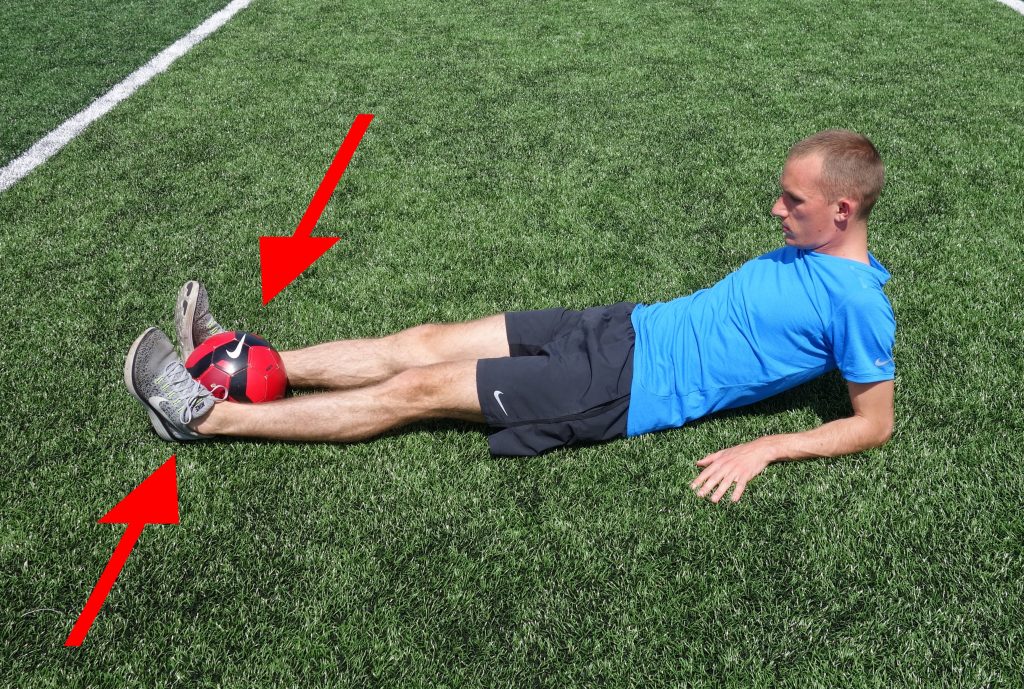
Exercise #2: 10x30sec soccer ball squeeze between knees
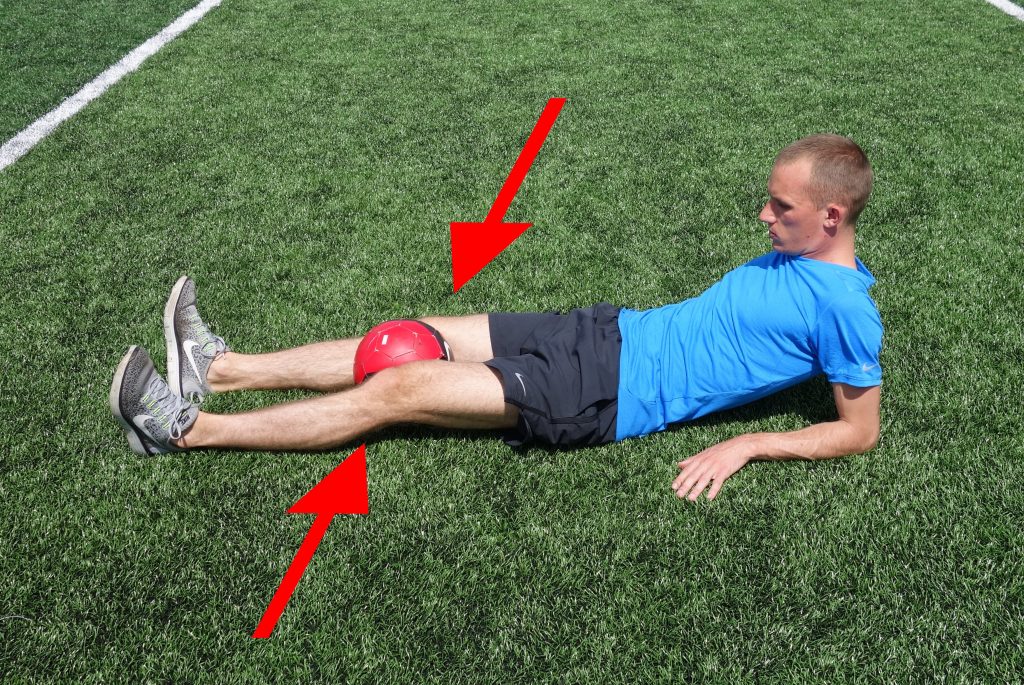
Exercise #3: 5×10 regular sit-ups and 5×10 oblique sit-ups (on both sides)
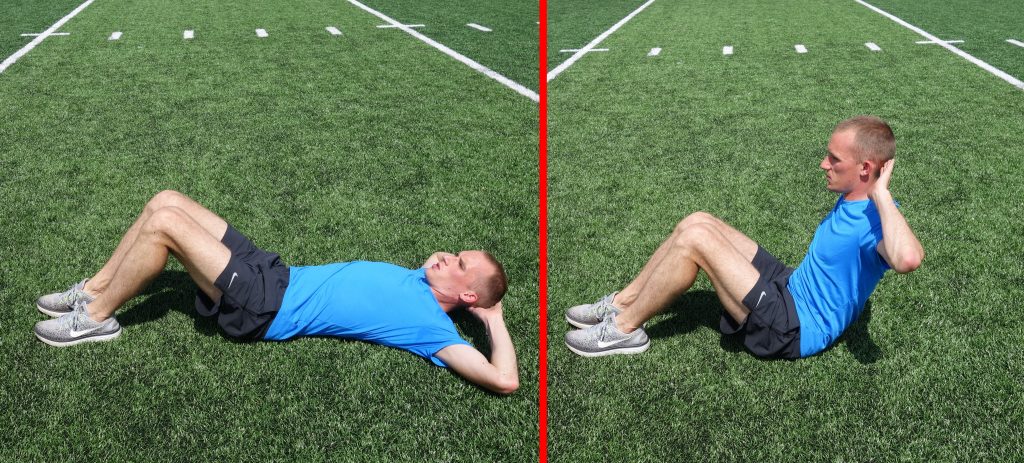
Exercise #4: “Folding knife” sit-up with soccer ball between knees, 5×10 reps
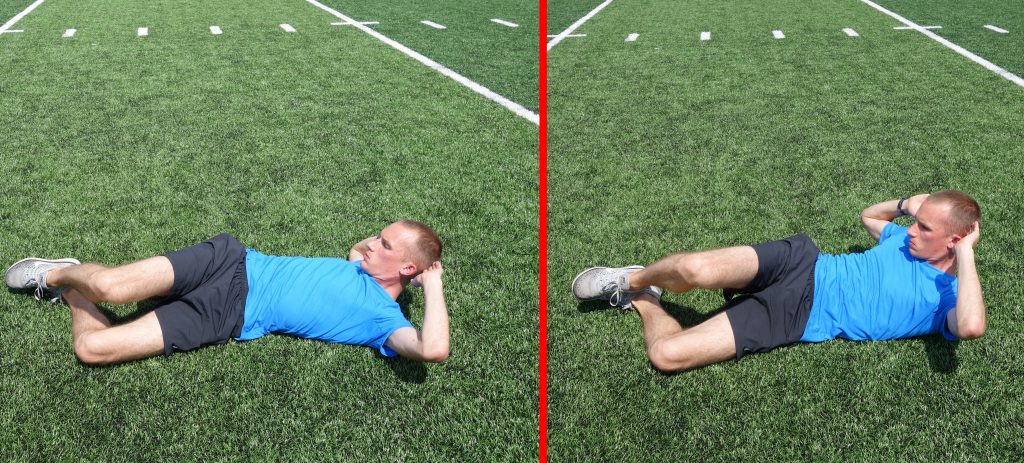
Exercise #5: “Folding knife” sit-up with soccer ball between knees, 5×10 reps
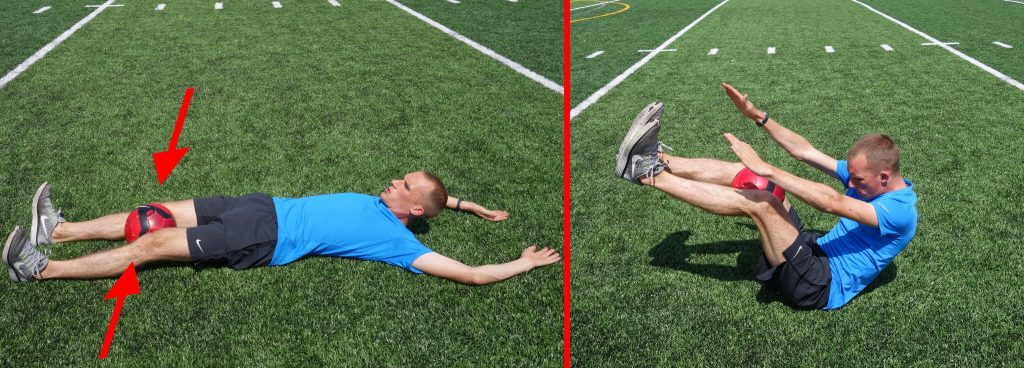
Exercise #6: Balance training on wobble board for 5min
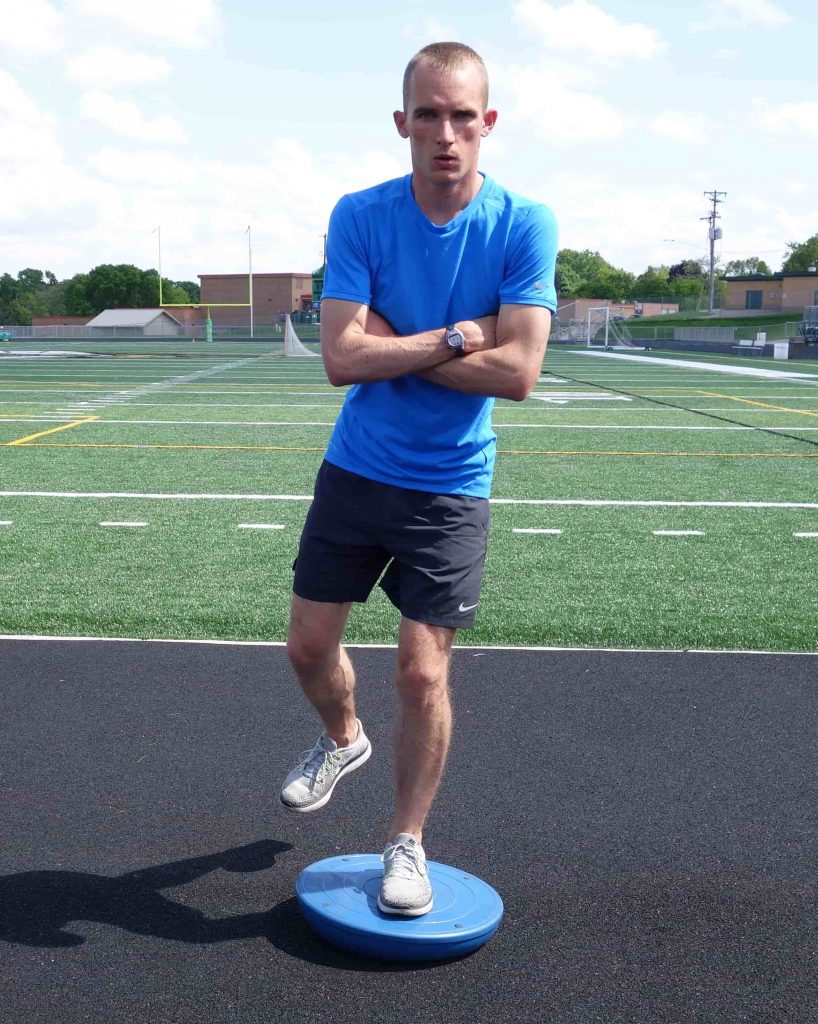
Exercise #7: Slide board training: 5x1min with feet parallel
Exercise #8: Slide board training: 5x1min with feet perpendicular
Phase two exercises, to be done daily for an additional six to ten weeks
Exercise #1: Hip abduction leg lift on side, 5×10 reps
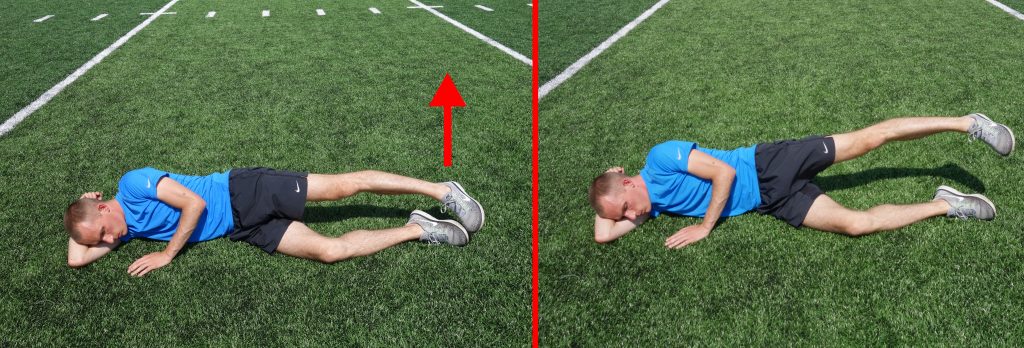
Exercise #2: Hip adduction leg lift on side, 5×10 reps
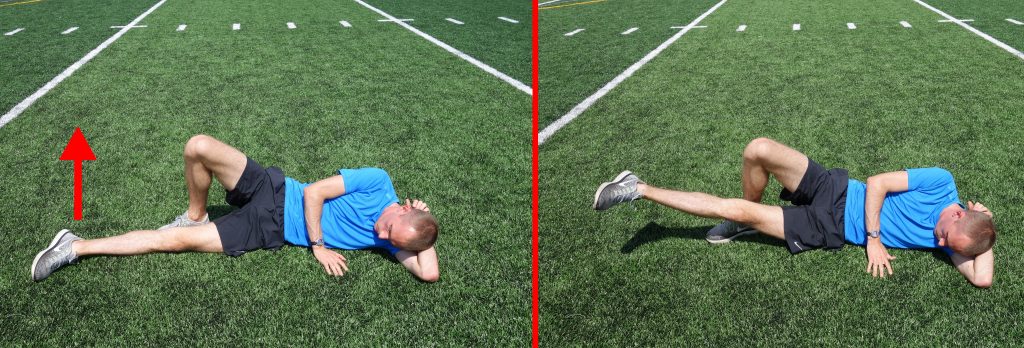
Exercise #3: Low back extension, 5×10 reps
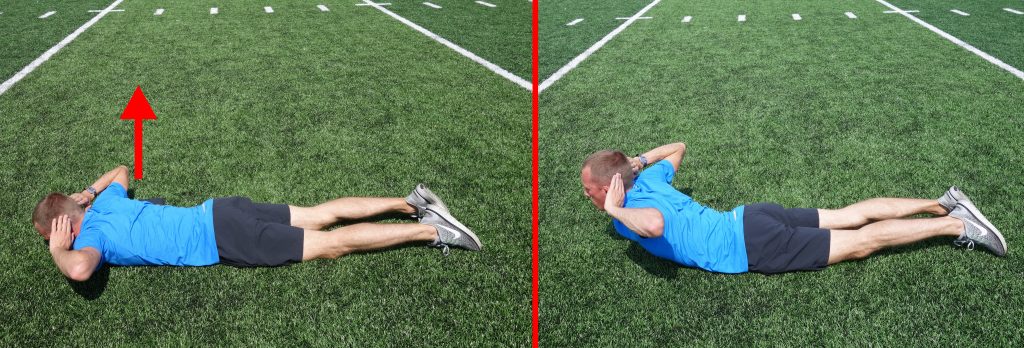
Exercise #4: Standing adduction with resistance band, 5×10 reps
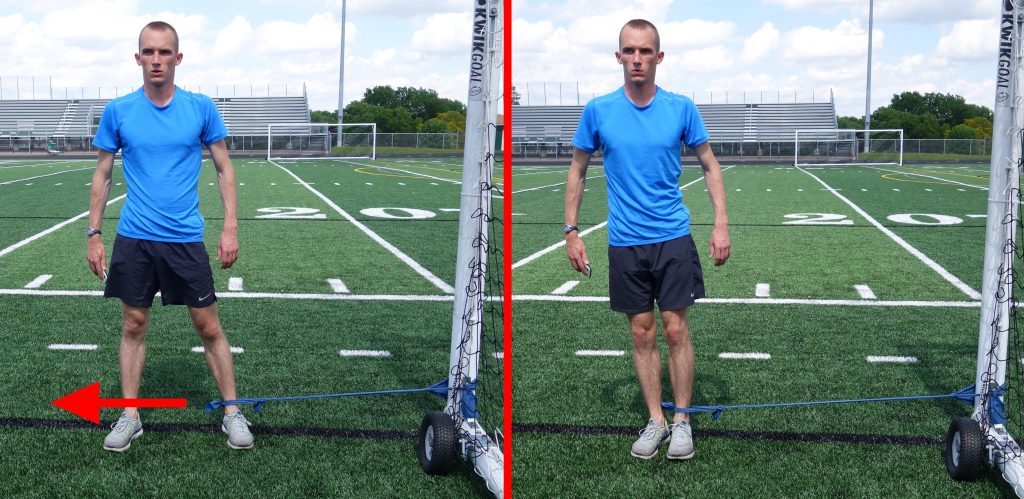
Exercise #5: 5×10 regular sit-ups and 5×10 oblique sit-ups (on both sides)
Exercise #6: One leg “air running” drill, 5×10 reps
Exercise #7: Balance board training, 5min (using a Fitter Board, Indo Board, or similar tool)
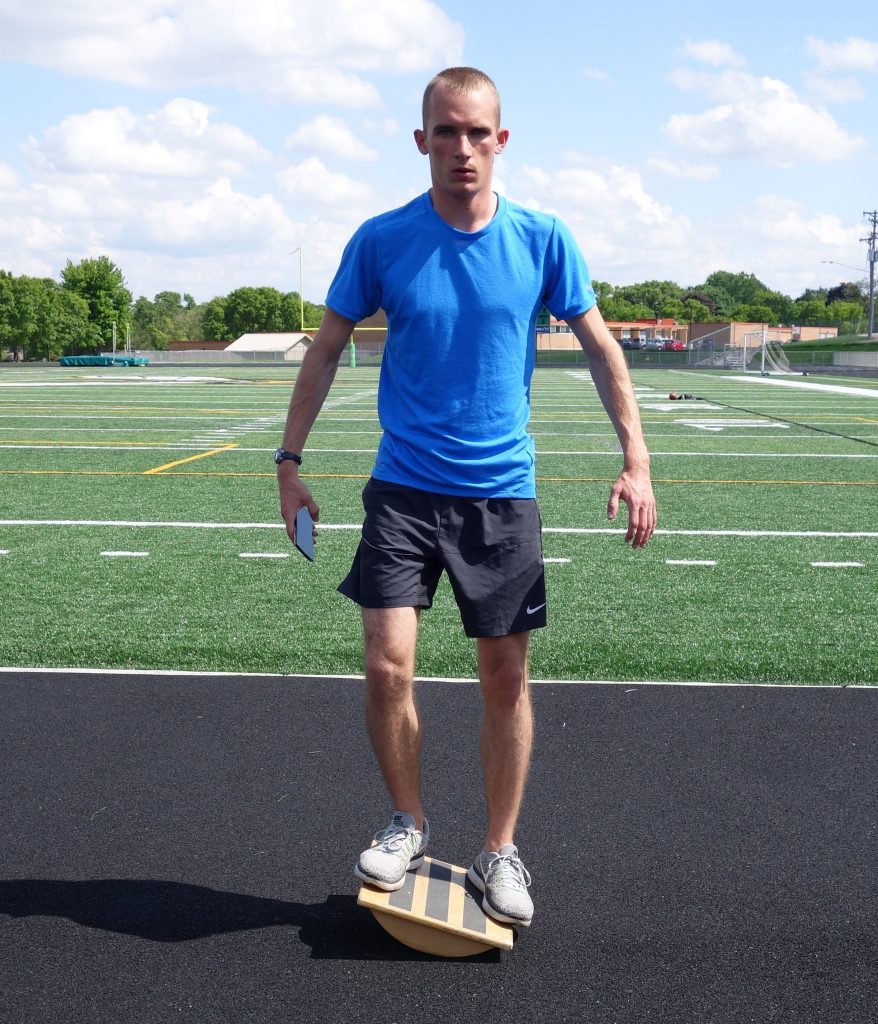
Exercise #8: Balance training on wobble board, 5min
Exercise #9: Slide board training: 5min continuous with feet parallel
Exercise #10: Slide board training: 5min continuous with feet perpendicular
Practical Considerations
There are a few practical downsides to Hölmich et al.’s active training program. For one thing, it takes up a lot of time. Nobody has done any follow-up studies on whether a pared-down program is just as effective, so you really ought to do the whole thing.
Further, it does require some special equipment, like a wobble board, a slide board (usually used by hockey players for dry-land training), and a rolling balance board. Still, if you’ve had long-standing groin pain, it’s definitely worth the investment. Please read, The Benefits Of Balance Training For Runners to learn more.
One more useful point to consider about the active training program is that the protocol explicitly forbids stretching the adductor muscles. The authors of the study hypothesize that stretching might actually perpetuate the injury by preventing healing, so not stretching a groin injury seems like the best course of action.
Additional Treatments To Try
Though they lack the scientific rigor of the active training program, many runners report success with soft tissue therapies like Graston Technique, Active Release Technique, or even rolling the groin area at home with a medicine ball or well-inflated basketball (foam rollers tend to be awkwardly shaped for rolling the groin area; a large ball works much better).
When it comes to emerging treatments, there’s very little research. Treatments like platelet-rich plasma and shockwave therapy haven’t been studied in groin injuries, so you’re unlikely to find any success down those routes.
If you don’t see results with the Hölmich et al. protocol, see a doctor to determine if you have other underlying issues that could be causing your groin pain. Surgery may be a last resort option for groin pain in runners, assuming you have the cause of your pain accurately identified and can find a surgeon who has experience working with athletes.
Return To Running
Hölmich et al.’s program forbids running for the first six weeks of treatment. After that, easy jogging is allowed on a level surface, provided it does not cause pain. Using a pain-managed plan increasing mileage cautiously if things go well.
And backing off or taking some time off if your pain returns is the best way to move forward with running after you’ve been doing the active training protocol for six weeks without running.








